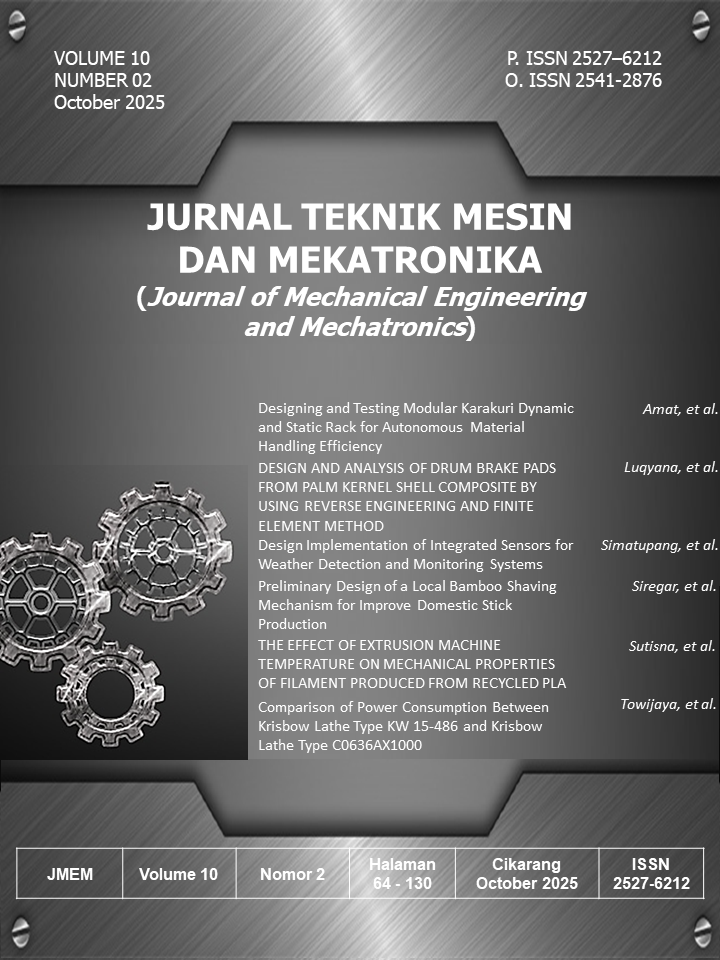DESIGN AND ANALYSIS OF DRUM BRAKE PADS FROM PALM KERNEL SHELL COMPOSITE BY USING REVERSE ENGINEERING AND FINITE ELEMENT METHOD
Abstract
The braking system is an important component of a vehicle. This is closely related to global vehicle accident data, which reaches 1.35 million per year, so a braking system with the right material composition is needed. There are two types of braking systems: disc brakes and drum brakes. Among these two types of materials, disc brakes are commonly used in braking systems for both four-wheeled and two-wheeled vehicles. However, disc brake systems are more expensive than drum brakes. The development of drum brakes aims to achieve a more cost-effective and efficient braking system. In this study, the type of brake being researched is the drum brake system on motorcycle. The old brake pad type requires development in both structure and material because the old brake pad model requires the entire brake pad assembly to be replaced when the brake pad is worn out. If the brake pad with the mounting bracket can be disassembled and reassembled when the brake pad is worn out, the brake fabrication cost can be reduced by 10-30%. Through a reverse engineering approach for development, a new brake pad design that can be disassembled and reassembled was obtained. Furthermore, material updates using natural fiber composites were employed for more environmentally friendly brake pads. Palm kernel shell (PKS) composite was selected due to the abundance of palm oil waste from plantations in Indonesia. The composite composition and material properties of PKS were referenced from previous research. Finite element method (FEM) analysis using ANSYS was conducted to understand how the PKS composite performs during braking. The results of the ANSYS test indicate that PKS material has potential for experimental testing through direct material testing. stress values, and temperature enable better absorption of braking heat during braking, indicating that further research can be conducted.






